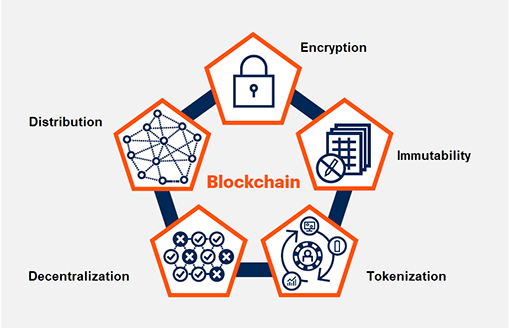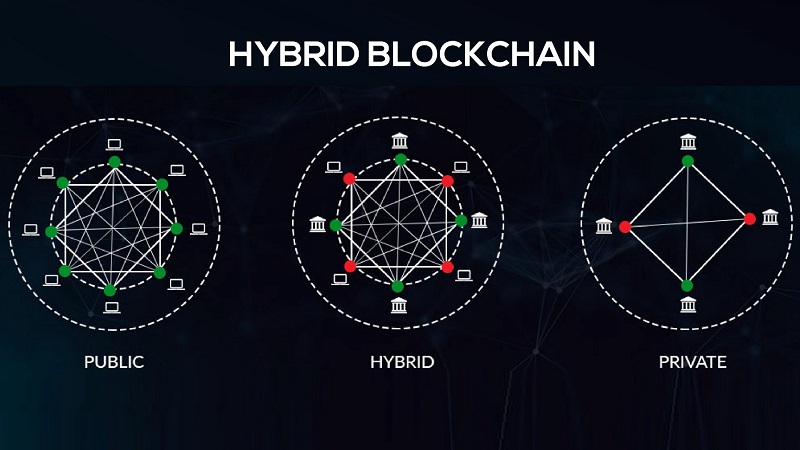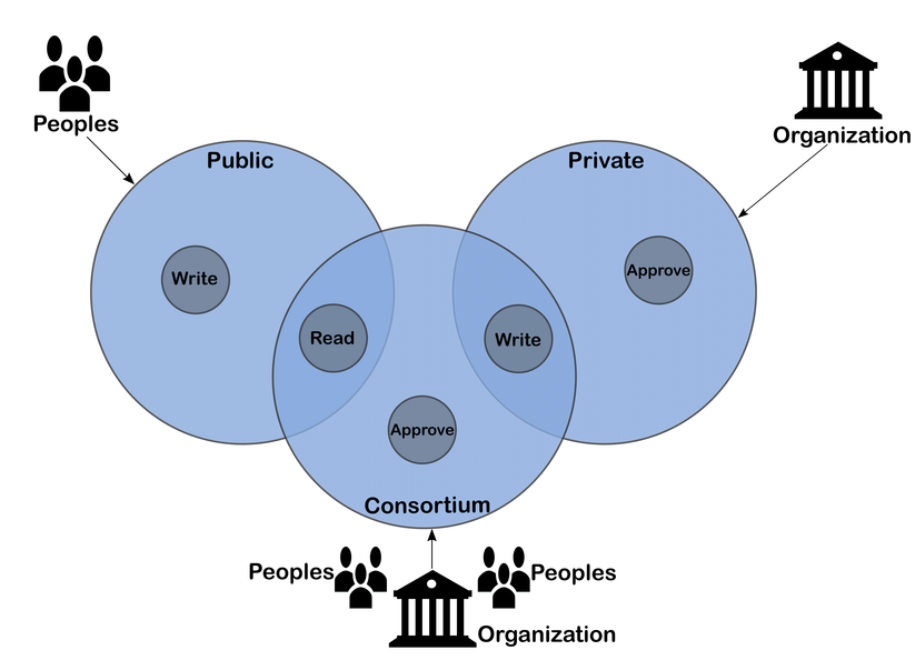This article was published as a part of the Data Science Blogathon.
Introduction
Blockchain technology is a decentralized, distributed ledger that keeps a record of ownership of digital assets. Any data stored on the blockchain cannot be modified, making the technology a legitimate disruptor for payments, cybersecurity, and healthcare industries. Blockchain is a system of registering information that makes it hard or impossible to change, hack or cheat the system.

What is Blockchain Technology?
Why is blockchain important?

Exploring the types of Blockchain Technology
Private Blockchain
What is a Private Blockchain?
- Private blockchains are fast. This is because there are few participants compared to a public blockchain. In short, the network takes less time to reach consensus, resulting in faster transactions.
- Private blockchains are more scalable. Scalability is possible because only a few nodes are authorized to verify transactions in a private blockchain. It doesn’t matter if the network grows; the private blockchain will operate at its previous speed and efficiency.
- Private blockchains are not truly decentralized. This is one of the biggest disadvantages of a private blockchain and goes against the basic philosophy of the distributed ledger or blockchain.
- Achieving trust within a private blockchain is difficult because centralized nodes make the final call.
- Finally, the security is not so good since only a few nodes exist. It is important to understand that it is possible to lose security if a certain number of nodes go bad and compromise the consensus method used by the private network.
Public Blockchain
What is Public Blockchain?
- In a public blockchain, anyone can participate by reviewing and adding data to the blockchain.
- The public blockchain is decentralized.
- By orders of magnitude, a public blockchain is lighter than a private blockchain and generates transaction throughput.
- Transactions per second are less in public blockchains compared to private blockchains.
- A public network is more secure because it is decentralized and involves active participation.
- In a public blockchain, it is required to grant access to a centralized authority to oversee the entire network.
- Anyone can join a public blockchain.
- It instills trust among the entire user community.
- Everyone feels motivated to work to improve the public network
- A public blockchain requires no intermediaries to work.
- It brings transparency to the entire network as data is available for verification purposes.
- It suffers from low transaction speed. The transaction may take several minutes to hours to complete. For example, Bitcoin can only handle seven transactions per second compared to VISA’s 24,000 transactions per second. After all, solving mathematical problems and completing the transaction takes time.
- Another problem with public blockchain is scalability. They simply cannot scale because of how they operate. The more nodes that connect, the clumsier and slower the network becomes. Bitcoin, for example, is working on lighting the network, making transactions off-chain to make the main Bitcoin network faster and more scalable.
- The last disadvantage of a public blockchain is the consensus choice of method. For example, Bitcoin uses Proof-of-Work (PoW), which consumes a lot of energy. However, this has been partially resolved using more efficient algorithms such as Proof-of-Stake (PoS).

source: https://www.e-zigurat.com/innovation-school/blog/public-vs-private-blockchain-whats-the-difference/
Hybrid Blockchain
Hybrid blockchain is a unique type of blockchain technology that combines the components of public and private blockchain or tries to use the ideal part of public and private blockchain solutions.
- It works in a closed ecosystem without the need to publish everything.
- Rules can be changed as needed.
- Hybrid networks are also immune to 51% of attacks.
- It offers privacy while still being connected to the public network.
- It gives good scalability if we compare it to another public network.
- Not completely transparent.
- Upgrading to a hybrid blockchain can be a challenge.
- There is no incentive to participate and contribute to the network.

source:https://dbe.ae/what-is-hybrid-blockchain/
Consortium Blockchain
What is a blockchain consortium?
A blockchain consortium is a permissioned blockchain technology through which multiple organizations operate the platform.
It is quite similar to a private blockchain. In a private blockchain, there is only one organization on the platform, while in a consortium blockchain, multiple organizations manage the platform.
A blockchain consortium allows new users to join an established structure and share information instead of starting over.
Blockchain Consortium helps organizations jointly search for solutions and save development time and costs.
- Verification: The number of participants in the consortium blockchain is known and verified.
- Control: Instead of a single entity, a specific group of authentic participants governs the blockchain platform.
- Security: Information on authentic blocks is private.
- Economical: the blockchain consortium does not charge any service or transaction fees in the consortium setup.
- Flexibility: Connecting multiple validators to other blockchains leads to mutual consensus and synchronization issues.
- Although secure, the entire network can be compromised due to the integrity of a member.
- It is less transparent.
- Regulations and censorship can have a very large effect on network functionality.
- It is also less anonymous if we compare it to another type of blockchain.

source:https://www.researchgate.net/figure/Consortium-Blockchain-with-Different-Access-Policies_fig2_351869062
Conclusion
This brings us to the end of our guide to the different types of blockchain. In general, it is a good idea to use a private blockchain if you are a business and want to use it without making everything public. If you want more transparency in your network, then a public platform is a good choice. But they are not very suitable for business use cases.
Key takeaways:
- Before giving the final verdict, we thoroughly studied the two main types of blockchains, i.e. private and public blockchains. Both have some differences between them. However, the main differences lie in security, scalability and transparency. On the one hand, where the private network may not seem very trustworthy, you can completely rely on the public network for its unbroken consensus system (proof-of-work).
- A public blockchain guarantees security because hacking the entire network is almost impossible. In addition, it offers data transparency as every node has equal access to the record stored in the blockchain. One very successful example of a public blockchain is the Bitcoin system.
The media shown in this article is not owned by Analytics Vidhya and is used at the Author’s discretion.





